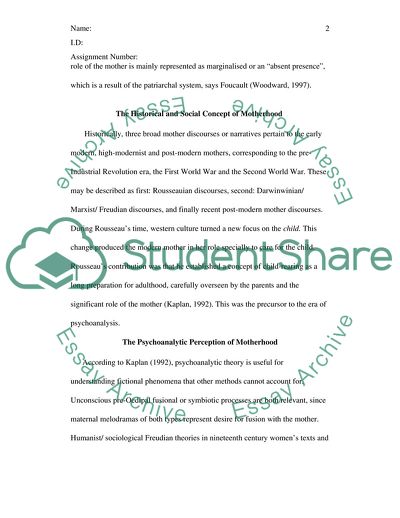Cite this document
(The Concept of Essentialism Term Paper Example | Topics and Well Written Essays - 1750 words, n.d.)
The Concept of Essentialism Term Paper Example | Topics and Well Written Essays - 1750 words. Retrieved from https://studentshare.org/sociology/1708521-discuss-the-view-that-motherhood-is-a-contested-identity-by-exploring-some-of-the-tensions-between-essentialist-and-non-essentialist-theories-of-identity
The Concept of Essentialism Term Paper Example | Topics and Well Written Essays - 1750 words. Retrieved from https://studentshare.org/sociology/1708521-discuss-the-view-that-motherhood-is-a-contested-identity-by-exploring-some-of-the-tensions-between-essentialist-and-non-essentialist-theories-of-identity
(The Concept of Essentialism Term Paper Example | Topics and Well Written Essays - 1750 Words)
The Concept of Essentialism Term Paper Example | Topics and Well Written Essays - 1750 Words. https://studentshare.org/sociology/1708521-discuss-the-view-that-motherhood-is-a-contested-identity-by-exploring-some-of-the-tensions-between-essentialist-and-non-essentialist-theories-of-identity.
The Concept of Essentialism Term Paper Example | Topics and Well Written Essays - 1750 Words. https://studentshare.org/sociology/1708521-discuss-the-view-that-motherhood-is-a-contested-identity-by-exploring-some-of-the-tensions-between-essentialist-and-non-essentialist-theories-of-identity.
“The Concept of Essentialism Term Paper Example | Topics and Well Written Essays - 1750 Words”. https://studentshare.org/sociology/1708521-discuss-the-view-that-motherhood-is-a-contested-identity-by-exploring-some-of-the-tensions-between-essentialist-and-non-essentialist-theories-of-identity.


